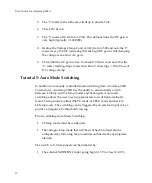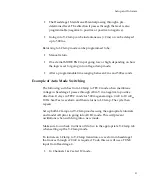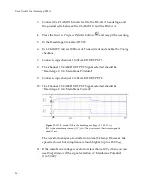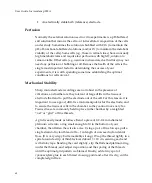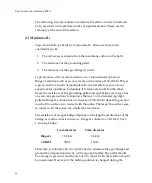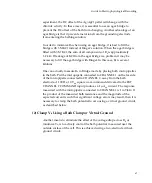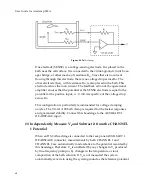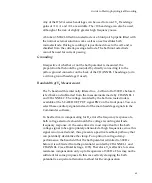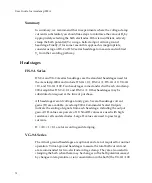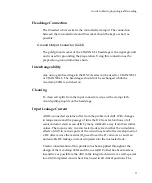
User
Guide
for
Axoclamp
900A
I
‐
Clamp:
Voltage
noise
increases
markedly
with
electrode
capacitance
and
resistance.
Thus,
both
should
be
minimized
as
much
as
possible
(see
Sharp
Microelectrode
Recording
in
this
chapter).
Headstage
Circuit
V
‐
Clamp:
Current
noise
decreases
as
the
value
of
the
current
injection
resistor
(R
0
)
is
increased.
Thus,
for
minimum
noise
the
largest
R
0
should
be
chosen,
subject
of
course
to
range
limitations.
I
‐
Clamp:
Voltage
noise
decreases
as
the
value
of
R
0
is
decreased,
but
R
0
should
be
chosen
so
that
it
matches
the
load
resistance
(
i.e.,
sum
of
electrode
and
cell
resistance)
within
a
1:10
ratio
(a
1:5
ratio
is
optimal).
Thus,
R
0
=
50
M
Ω
will
work
optimally
for
loads
between
10
M
Ω
and
250
M
Ω
.
This
range
limitation
is
determined
by
the
effectiveness
of
the
Capacitance
Neutralization
circuit.
Compensation
Circuits
V
‐
Clamp:
Increasing
Voltage
‐
Clamp
Control
Gain
is
required
for
optimal
voltage
control
and
bandwidth,
but
can
decrease
voltage
‐
clamp
stability
and
lead
to
oscillations
that
can
kill
cells.
Changing
the
Lag
is
used
to
enable
higher
gains
while
preventing
oscillation.
These
changes
typically
need
to
be
made
iteratively
for
best
results.
I
‐
Clamp:
Increasing
Pipette
Capacitance
Neutralization
increases
the
voltage
noise,
because
the
compensation
circuit
employs
positive
feedback
that
injects
noise
back
into
the
headstage.
Power
Supply
Noise
can
arise
from
earth
loops,
power
supply
glitches
and
radiation
from
nearby
instruments
(see
Grounding
and
Hum
,
and
Power
Supply
).
Computer
Noise
Digital
computers
can
generate
considerable
electrical
noise,
both
via
the
power
ground
and
via
radiative
interference
from
the
monitor.
For
optimal
64

